New Orleans’ Neighborhoods: A Definitive Guide
Often referred to as a melting pot of cultures, New Orleans is a city that proudly showcases its diverse influences through its architecture, food, music, and traditions, and this is reflected in many of New Orleans’ neighborhoods. By delving into the essence of each neighborhood, we aim to provide a richer understanding of what makes New Orleans so special and help you experience its vibrant spirit like a true local.
From the iconic French Quarter to the elegant Garden District, and beyond, this series will cover a wide range of neighborhoods, each with its own charm and character. We’ll explore the history behind the neighborhoods’ development, their must-see attractions and landmarks, local businesses and eateries that give them their unique flavor, and the festivals and events that bring these communities to life. So, whether you’re a long-time resident or planning your first visit to the Big Easy, join us as we dive deep into the soul of New Orleans, one neighborhood at a time.
French Quarter: The Heart of the Crescent City
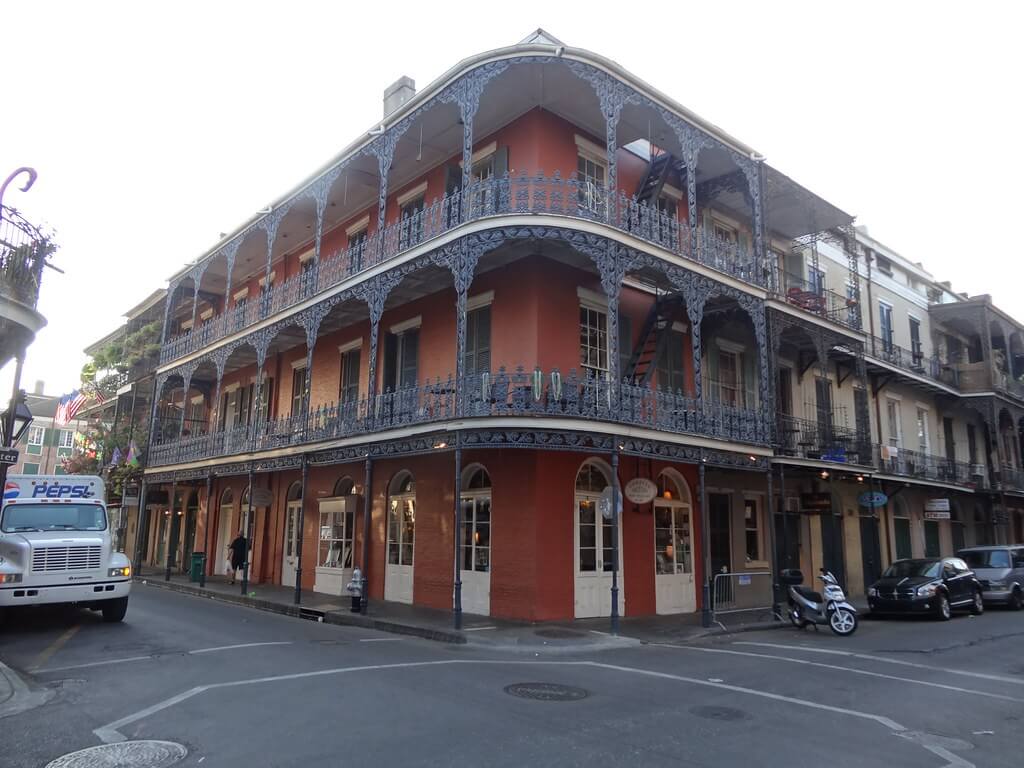
French Quarter by denisbin lic CC BY-ND 2.0
Brief History and Architectural Style
Established in 1718, the French Quarter is the oldest neighborhood in New Orleans and the birthplace of the city’s unique blend of French, Spanish, and Creole influences. Known for its stunning architecture, the French Quarter is characterized by its colorful buildings, intricate ironwork balconies, and iconic courtyards. Many structures in this area showcase French Colonial, Spanish Colonial, and Greek Revival architectural styles.
Major Attractions and Landmarks
- Jackson Square: At the center of the French Quarter is the historic Jackson Square, a beautiful public space surrounded by historic buildings, including the iconic St. Louis Cathedral. The square is always bustling with activity, from artists selling their work to street performers and musicians.
- St. Louis Cathedral: The oldest continuously active Roman Catholic cathedral in the United States, St. Louis Cathedral is an iconic symbol of New Orleans. With its striking white façade and three spires, the cathedral is a must-visit landmark in the French Quarter.
- Bourbon Street: Bourbon Street is the epicenter of New Orleans nightlife, known for its lively bars, clubs, and live music venues. This vibrant street is famous for its raucous atmosphere, making it a popular destination for visitors looking to experience the city’s party scene.
Local Businesses and Eateries
The French Quarter is home to an array of eclectic shops, galleries, and eateries that capture the essence of New Orleans. Be sure to visit the historic Café du Monde, serving its famous beignets and café au lait since 1862. For a taste of classic Creole cuisine, try Antoine’s or Galatoire’s, both of which have been serving delicious fare for over a century.
Festivals and Events
The French Quarter is the hub for many of New Orleans’ famous festivals and events. The annual French Quarter Festival, held in April, is a celebration of local food, music, and culture. Mardi Gras, the city’s most famous event, sees colorful parades and festivities throughout the French Quarter. Throughout the year, visitors can enjoy a variety of other events, including the Satchmo SummerFest, which celebrates the life and music of Louis Armstrong.
In the French Quarter, history and culture come alive around every corner, providing visitors and locals alike with a unique experience that embodies the spirit of New Orleans.
Garden District: Grandeur and Elegance Amidst Lush Greenery
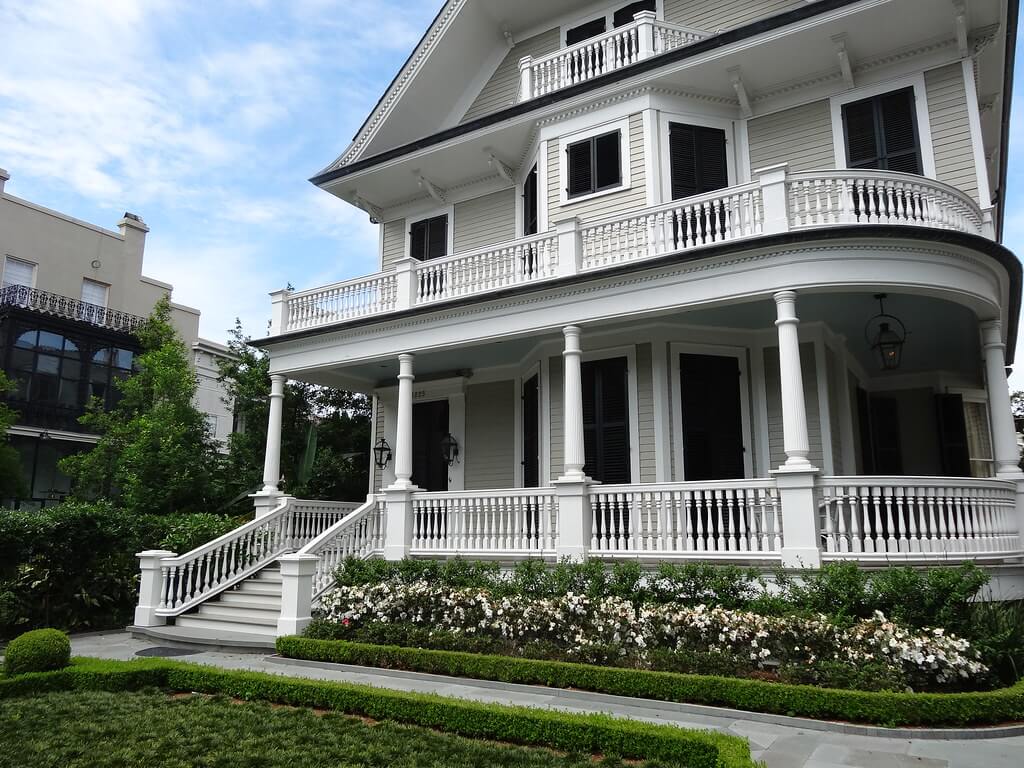
Garden City by denisbin lic CC BY-ND 2.0
Brief History and Architectural Style
The Garden District was established in the 19th century as an upscale residential area for wealthy Americans who sought to distance themselves from the European influences in the French Quarter. The neighborhood boasts well-preserved antebellum mansions, lush gardens, and picturesque streets lined with ancient oak trees. Architectural styles in the Garden District include Greek Revival, Italianate, and Victorian, reflecting the opulence of the era.
Major Attractions and Landmarks
- Lafayette Cemetery No. 1: This historic cemetery, established in 1833, is an excellent example of the city’s unique above-ground burial traditions. Wander through the rows of ornate tombs and mausoleums, and discover the stories of the people who shaped New Orleans’ history.
- Magazine Street: Stretching for six miles through the Garden District, Magazine Street is a shopper’s paradise. From antique shops and art galleries to trendy boutiques and local eateries, there’s something for everyone to enjoy along this charming thoroughfare.
- Historic Mansions: The Garden District is renowned for its stunning antebellum mansions, each with its own unique history and architectural style. Some notable homes include the Buckner Mansion, the Anne Rice House, and the Colonel Short’s Villa. Many of these homes can be admired during a self-guided walking tour or a guided excursion.
Local Businesses and Eateries
The Garden District offers a variety of dining options that cater to diverse tastes. For a refined dining experience, visit Commander’s Palace, a New Orleans institution since 1893, known for its Creole cuisine and elegant atmosphere. For a more casual meal, try Joey K’s, a beloved neighborhood spot serving up comfort food with a Louisiana twist.
Festivals and Events
While the Garden District may not host as many large-scale events as the French Quarter, it still has its share of festivities. The annual Magazine Street Art Market, held in December, showcases local artists and craftspeople, while the St. Charles Avenue Garden District Tour offers visitors the chance to explore some of the neighborhood’s most beautiful private gardens each spring.
The Garden District offers a tranquil retreat from the bustling city, with its grand mansions, leafy streets, and charming local businesses. This neighborhood provides a glimpse into New Orleans’ opulent past while maintaining a vibrant, contemporary community.
Marigny & Bywater: Bohemian Charm and Eclectic Vibes
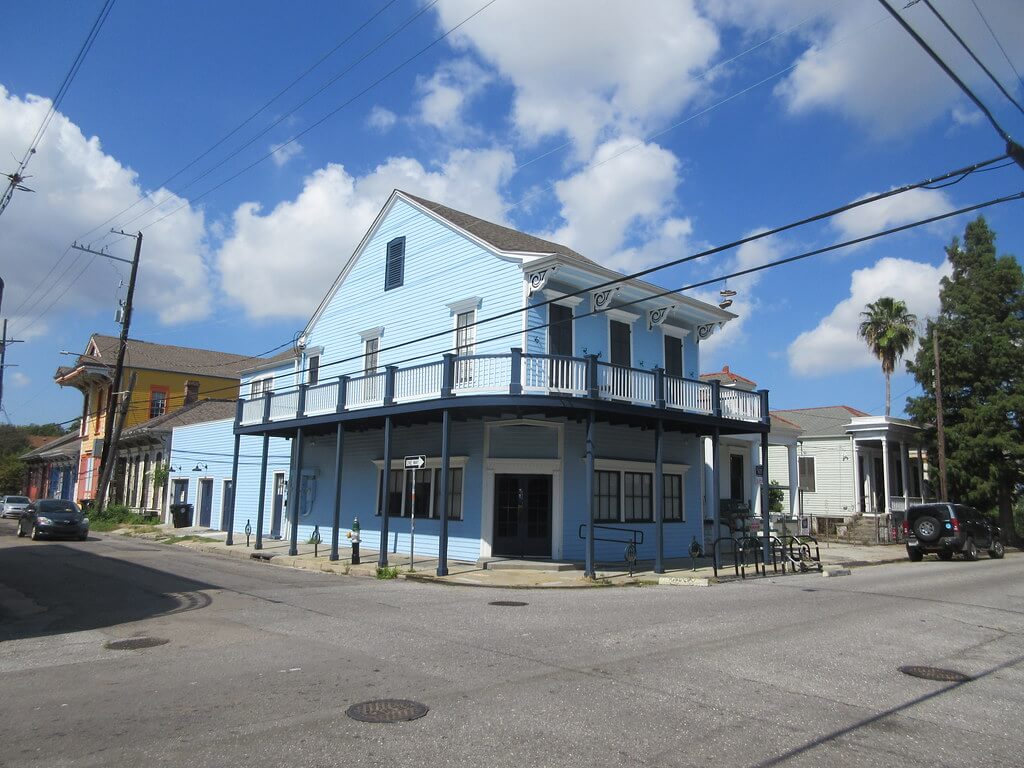
Bywater New Orleans by Infrog lic CC BY 2.0
Brief History and Architectural Style
The adjacent neighborhoods of Marigny and Bywater, located just downriver from the French Quarter, are known for their bohemian atmosphere and tight-knit communities. These neighborhoods, originally settled in the early 19th century, showcase a diverse mix of architectural styles, such as Creole cottages, shotgun houses, and colorful Victorian homes.
Major Attractions and Landmarks
- Frenchmen Street: Located in the Marigny, Frenchmen Street is the go-to destination for live music lovers. This lively strip is home to numerous bars and clubs, where you can catch local bands playing jazz, blues, and funk every night of the week. Don’t miss the Frenchmen Art Market, an open-air market featuring local artisans and their creations.
- Crescent Park: This 1.4-mile linear park along the Mississippi River offers stunning views of the city skyline, perfect for an afternoon stroll or a picnic. Accessible from both Marigny and Bywater, Crescent Park is a favorite spot for locals to relax, exercise, or catch the sunset.
- Studio Be: Located in Bywater, Studio Be is a massive warehouse-turned-art gallery featuring the work of renowned local artist Brandan “Bmike” Odums. The gallery displays powerful murals and installations that address social issues, making it a must-visit spot for art enthusiasts.
Local Businesses and Eateries
Marigny and Bywater boast a variety of locally-owned businesses and eateries that cater to the neighborhoods’ eclectic tastes. For a taste of New Orleans-style pizza, try Pizza Delicious in Bywater or head to The Joint for some of the city’s best barbecue. In the Marigny, indulge your sweet tooth at the charming Who Dat Coffee Café or enjoy a meal at the neighborhood staple, Marigny Brasserie.
Festivals and Events
These vibrant neighborhoods host a variety of events throughout the year, including the annual Marigny Mardi Gras Parade, which offers a more intimate, family-friendly alternative to the larger parades in other parts of the city. Bywater also hosts the annual Bywater Mirliton Festival, a celebration of local food, music, and culture held in November.
Marigny and Bywater offer an offbeat, artsy alternative to the more tourist-heavy areas of New Orleans, with their colorful architecture, vibrant local businesses, and thriving creative scene. These neighborhoods provide a unique and authentic experience for those looking to immerse themselves in New Orleans’ rich culture.
Treme & Mid-City: Rich Cultural Heritage and Expansive Green Spaces
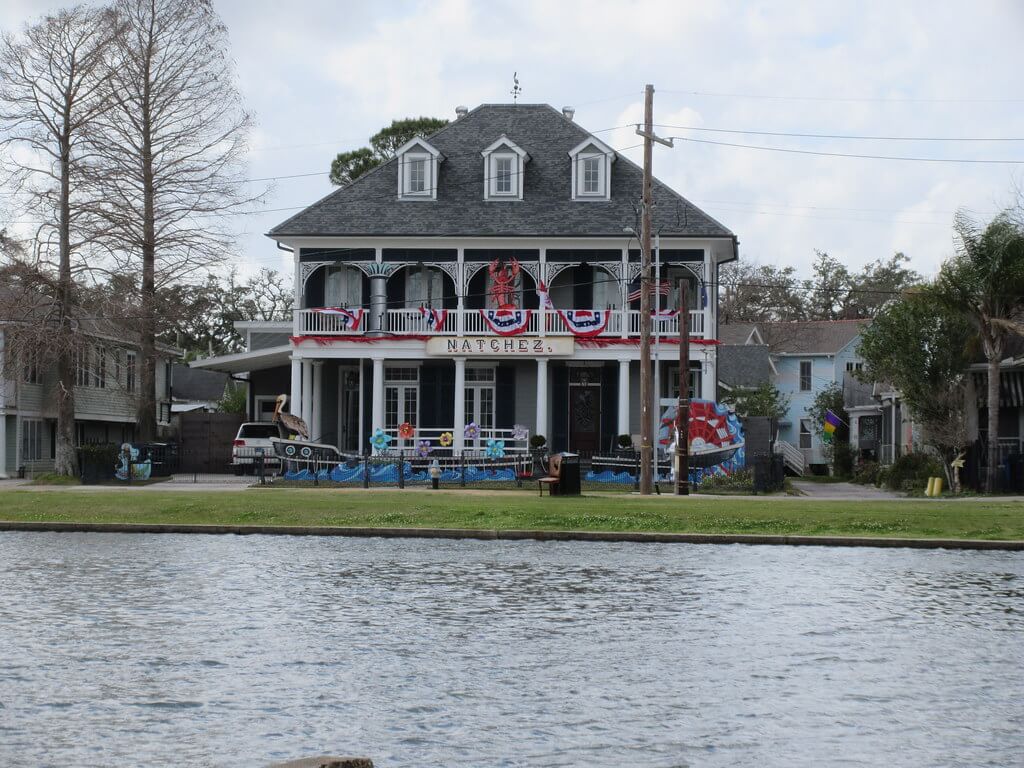
Mid-City by Infrog lic CC BY 2.0
Brief History and Architectural Style
Treme, one of the oldest African American neighborhoods in the United States, is renowned for its rich cultural heritage and contributions to New Orleans’ music and arts scenes. Mid-City, on the other hand, offers a more residential atmosphere, with a mix of architectural styles, including shotgun houses, bungalows, and charming Arts and Crafts homes.
Major Attractions and Landmarks
- Louis Armstrong Park: Located in Treme, this 32-acre park is dedicated to the legendary jazz musician Louis Armstrong. The park is home to Congo Square, a historical site where enslaved Africans and free people of color gathered to play music, dance, and socialize. The park also features beautiful sculptures and a tranquil lagoon.
- New Orleans Museum of Art: Situated in Mid-City’s City Park, the New Orleans Museum of Art boasts an impressive collection of over 40,000 works, ranging from French and American art to photography and African and Asian art. The adjacent Sydney and Walda Besthoff Sculpture Garden showcases contemporary sculptures amidst picturesque landscapes.
- City Park: City Park, a sprawling 1,300-acre green space in Mid-City, offers a plethora of outdoor activities and attractions, including botanical gardens, playgrounds, an amusement park, and even a golf course. The park is also home to the historic Carousel Gardens and the picturesque Peristyle.
Local Businesses and Eateries
Treme and Mid-City are known for their diverse culinary offerings. For a true taste of Creole soul food, visit Dooky Chase’s Restaurant, a Treme institution since 1941. In Mid-City, indulge in authentic Italian cuisine at Venezia or enjoy casual fare at Parkway Bakery & Tavern, famous for its po’boys.
Festivals and Events
Both Treme and Mid-City host several annual events that celebrate New Orleans’ rich culture. The Treme Fall Festival, held in October, features local musicians, artists, and vendors, while the Bayou Boogaloo in Mid-City is a three-day music and arts festival held along the banks of Bayou St. John. Throughout the year, both neighborhoods also host smaller events, such as art markets, music performances, and cultural celebrations.
Treme and Mid-City offer a diverse mix of cultural experiences, from the historic and artistic contributions of Treme to the laid-back, residential charm of Mid-City. Visitors and locals alike can enjoy the neighborhoods’ unique blend of history, arts, and green spaces, making them perfect destinations to explore New Orleans’ multifaceted spirit.
Uptown & Carrollton: Stately Mansions and Picturesque Universities
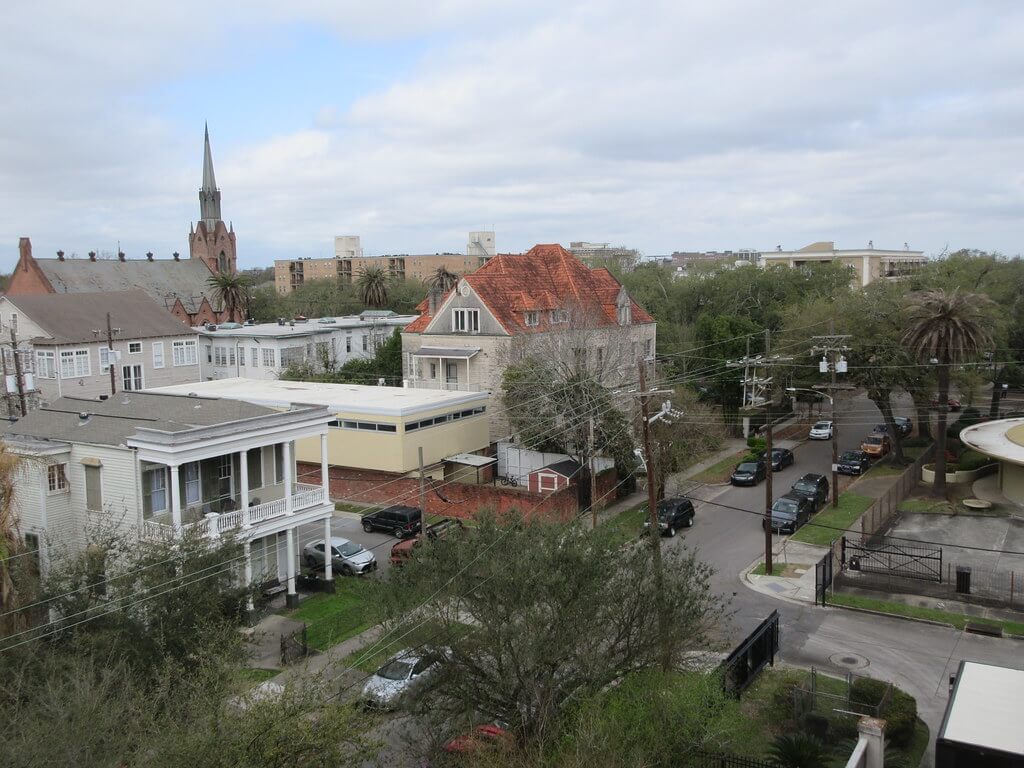
Uptown New Orleans by Infrog lic CC BY 2.0
Brief History and Architectural Style
The neighborhoods of Uptown and Carrollton, located along the Mississippi River and extending towards the city’s western boundaries, feature a blend of stately mansions, charming cottages, and picturesque oak-lined streets. Developed primarily during the 19th and early 20th centuries, these areas showcase various architectural styles, including Greek Revival, Victorian, and Queen Anne.
Major Attractions and Landmarks
- Audubon Park: This 350-acre park, located in Uptown, offers a lush retreat from the city’s hustle and bustle. Featuring a golf course, a zoo, and scenic walking and biking paths, Audubon Park is an ideal destination for outdoor enthusiasts.
- Tulane and Loyola Universities: Nestled within Uptown’s tree-lined streets, these two prestigious universities boast beautiful campuses with historic buildings, manicured lawns, and vibrant student life. Both campuses are open to visitors for self-guided tours.
- St. Charles Avenue Streetcar: The St. Charles Avenue streetcar, the oldest continuously operating streetcar line in the world, is a quintessential New Orleans experience. The streetcar travels through the heart of Uptown and Carrollton, offering stunning views of the area’s grand mansions and picturesque oak trees.
Local Businesses and Eateries
Uptown and Carrollton are home to a variety of local businesses and eateries that cater to diverse tastes. For a fine dining experience, try Gautreau’s or Clancy’s, both Uptown institutions known for their exquisite cuisine. For more casual fare, head to Camellia Grill in Carrollton, a beloved diner serving up comfort food classics.
Festivals and Events
While Uptown and Carrollton may not host as many large-scale events as other parts of the city, they still have their fair share of festivities. The annual St. Charles Avenue Home and Garden Tour offers visitors the chance to explore some of the area’s most beautiful private residences, while the Freret Street Festival celebrates local music, food, and arts. Additionally, several Mardi Gras parades roll through these neighborhoods, providing a more family-friendly atmosphere than the French Quarter.
Uptown and Carrollton showcase the elegance and charm of New Orleans’ residential neighborhoods, with their stately mansions, tranquil green spaces, and vibrant local businesses. A visit to these areas provides a glimpse into the city’s everyday life and offers a serene retreat from the more tourist-centric destinations.
Algiers Point: A Picturesque Escape Across the River
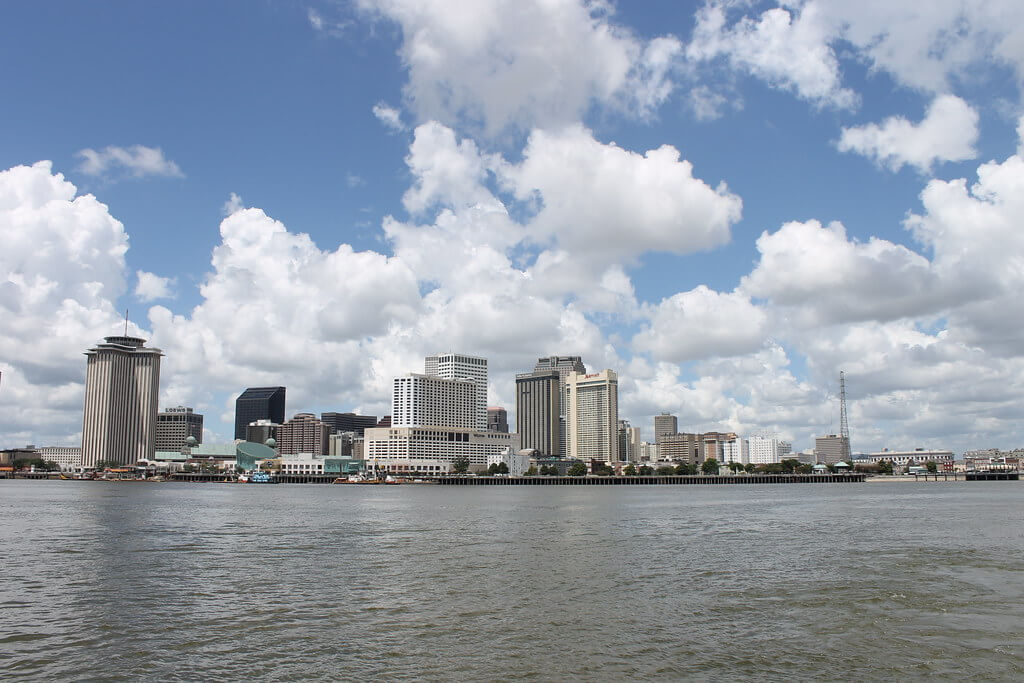
Algiers Point by Corey lic CC CC BY-NC-SA 2.0
Brief History and Architectural Style
Located on the west bank of the Mississippi River, Algiers Point is New Orleans’ second oldest neighborhood. Founded in 1719, this quaint area features a mix of architectural styles, including Victorian cottages, shotgun houses, and Creole homes. With its laid-back atmosphere and stunning views of the city skyline, Algiers Point offers a tranquil escape from the hustle and bustle of the city.
Major Attractions and Landmarks
- Algiers Ferry: The Algiers Ferry offers a scenic and convenient way to travel between the French Quarter and Algiers Point. The ferry ride provides a unique perspective of the New Orleans skyline and the Mississippi River, and it’s a favorite among both locals and tourists.
- The Jazz Walk of Fame: This riverside promenade pays tribute to the legendary jazz musicians who hailed from Algiers Point. Stroll along the walkway and learn about the neighborhood’s rich musical history through the informative plaques and markers.
- Algiers Point Historic District: Wander through the charming streets of Algiers Point’s historic district, admiring the beautifully preserved homes and lush gardens. The neighborhood’s relaxed pace and picturesque scenery make it a perfect place to explore on foot.
Local Businesses and Eateries
Algiers Point boasts a variety of local businesses, cafes, and eateries that give the neighborhood its distinctive charm. For a taste of traditional New Orleans fare, visit the Dry Dock Café, or enjoy a craft beer and live music at the Old Point Bar. For a caffeine fix, stop by Congregation Coffee, a local favorite known for its delicious coffee and pastries.
Festivals and Events
Although Algiers Point may not host as many events as other New Orleans neighborhoods, it still offers a few annual celebrations. The Algiers Point Bonfire & Concert is a beloved holiday tradition, featuring a massive bonfire, live music, and food vendors. Additionally, the annual Wednesdays on the Point concert series, held during the summer months, brings live music and food trucks to the neighborhood, creating a festive atmosphere for locals and visitors alike.
Algiers Point provides a peaceful retreat across the river from the bustling city, with its picturesque streets, historic homes, and stunning views of the New Orleans skyline. Whether you’re a history buff, architecture enthusiast, or simply looking for a serene escape, Algiers Point is a charming destination worth exploring.
Embracing the Unique Spirit of New Orleans
New Orleans is a city unlike any other, and its diverse neighborhoods each offer a unique glimpse into its rich history, culture, and charm. From the lively streets of the French Quarter and the elegant mansions of the Garden District to the bohemian atmosphere of Marigny and Bywater and the tranquil beauty of Algiers Point, there is something for everyone to discover and enjoy.
As you explore the neighborhoods of New Orleans, you’ll be captivated by the city’s resilient spirit, its vibrant music and art scenes, and its warm and welcoming people. Whether you’re a first-time visitor or a longtime resident, the neighborhoods of New Orleans will continue to surprise and delight you, revealing new layers of the city’s soul with each visit. So go ahead, venture beyond the well-trodden tourist paths, and experience the authentic essence of the Crescent City—one neighborhood at a time.
Fountainbleau Self Storage in New Orleans LA
And so, now that you have taken some time to get to know New Orleans’ neighborhoods, look to Fountainbleau Self Storage for all of your storage needs! At Fountainbleau Self Storage in downtown New Orleans, we provide affordable storage units with options such as drive-up and temperature-controlled storage. Additionally, we offer music studios for rent for band practice, among other amenities. Contact us by phone, email, or in-person to get started renting with us today!
Tim Glasow
About the Author: Tim is an SEO Strategist at Storage Asset Management in York, PA. He is a self-storage industry specialist who has written about everything from storage advice and helpful resources to industry trends. In his free time, Tim enjoys sampling craft beer and exploring the local music scene.

